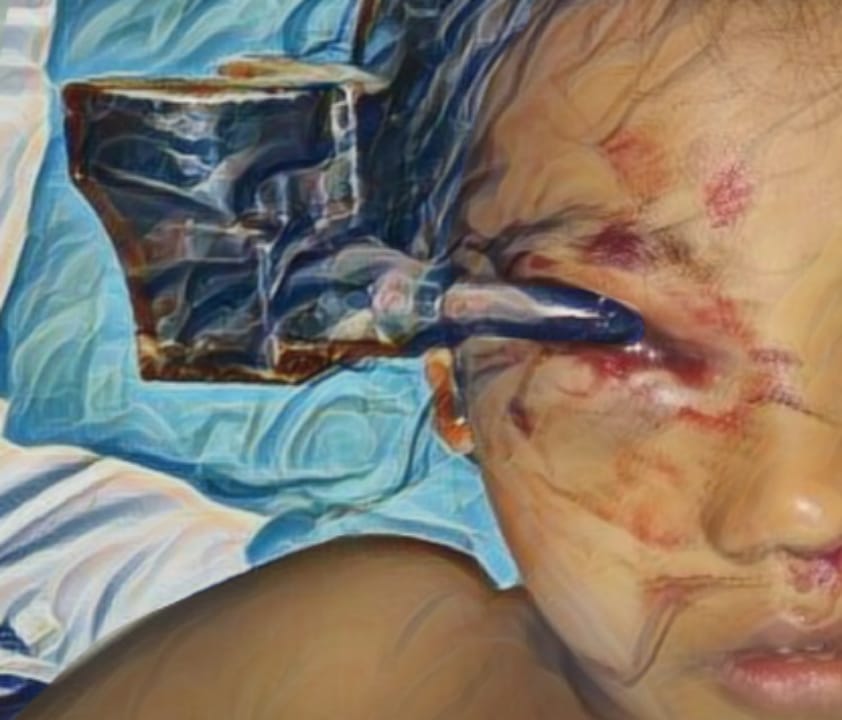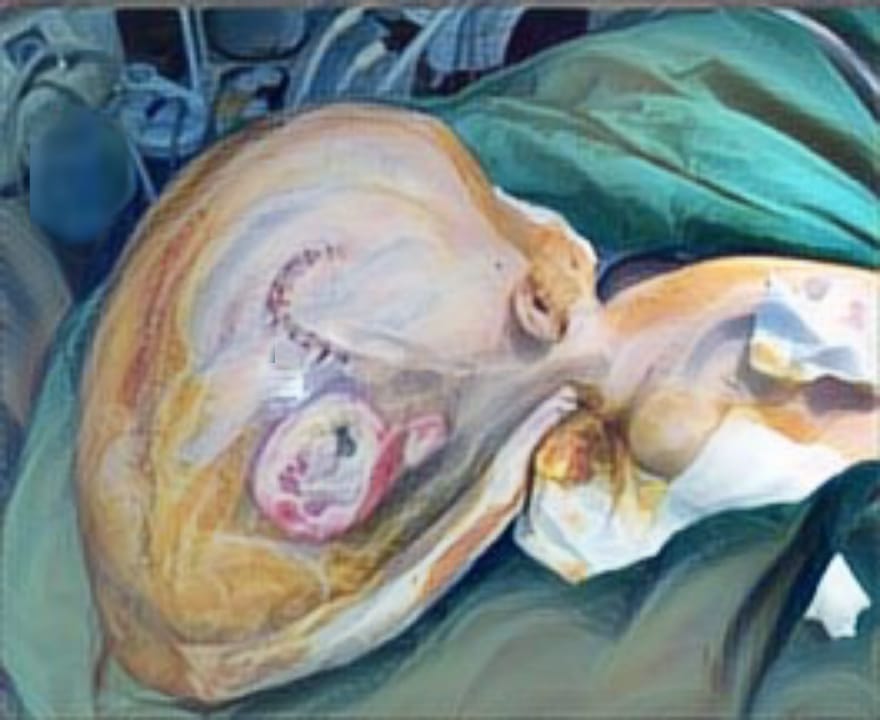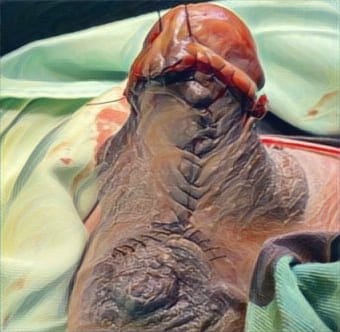SEVERE CONSTRICTED HEAD – AN EXTREME FORM OF CROUZON SYNDROME POSING CHALLENGING FRONTO-ORBITAL ADVANCEMENT: A CASE SERIES REPORTS
Downloads
Highlights:
- Severe Constricted Head in Crouzon Syndrome.
- Complex surgical interventions to address severe craniofacial abnormalities in Crouzon syndrome.
Abstract:
Introduction: Constricted head or cloverleaf deformity in Crouzon syndrome is a severe form of the syndrome involving trilobed coronal and lambdoid synostosis. Crouzon syndrome with acanthosis nigricans is distinct from the classic Crouzon syndrome, characterized by thick and dark skin in body folds. The major problems resulting from constricted head are related to craniostenosis, orbitostenosis developing from abnormalities of the skull base associated with progressive rise in intracranial and intraorbital pressures which could progress to hydrocephalus and cerebellar herniation.
Case Illustration: Two cases with severe Crouzon syndrome were reported. The first was a five month old girl associated with acanthosis nigricans and the other was a sixteen month old boy, both whose phenotypic expressions were at the extreme severe end of the disease spectrum. On examination there was serious corneal exposure, visual loss, severely narrow head, midface hypoplasia, and beaked nose. CT scan showed typical cloverleaf skull, expanded middle cranial fossa, foreshortened anterior and posterior fossae and honeycomb appearance in the occiput involving pansutural synostosis and extensive copper beaten deformity from the high intracranial pressure . Both were complicated with hydrocephalus requiring ventricul operitoneal shunt.
Discussion: This required an arduous effort in releasing the brain from the multiply punctured calvaria, avoiding excessive dural tear and bleeding and ultimately preserving the brain. Excessive bleeding was also caused by the raised ICP. Both patients are planned to undergo occipital expansion three months later.
Conclusion: Severely constricted head in Crouzon syndrome is an extreme manifestation and late stage of the syndrome which not only will result in irreversible complication but will require meticulous surgical technique.
Glaser RL, et al. Paternal origin of FGFR2 mutations in sporadic cases of Crouzon syndrome and Pfeiffer syndrome. Am J Hum Genet 2000;66:768-77.
Granger B., et al. Analysis of Fronto-orbital Advancement for Apert, Crouzon, Pfeiffer, and Saethre-Chotzen Syndromes, 2000.
Renier D., et al. Management of craniosynostoses, 2000.
Ghassan S., et al. Raised Intracranial pressure in crouzon syndrome: incidence,causer,and management., 2016.
Iannaccone G., Gerlini G., The So-called *Cloverleaf Skull Syndrome”, 1974.
Hanieh A., et al. Hydrocephalus in Crouzon's syndrome, 1989.
Granger B., et al. Analysis of Fronto-orbital Advancment for Apert, Crouzon, Pfeiffer, and Saethre-Chotzen Syndromes, 2000.
David JD, et al. The Craniosynostoses: Causes, Natural History, and Management. Springer-Verlag London. 1982.
Rohatgi M, Cloverleaf Skull – a Severe Form of Crouzon's Syndrome : a New Concept in Aetiology ,1991.
Hill.J, Lister Hill National Center For Biomedical Communication, Crouzon Syndrome With Acanthosis Nigricans, 2018.
Guyuron R., et al. Plastic Surgery Indcations and Practice, Saunders Elsevier, 2009.
Irene, Guidline Treatment and Management of Craniosynostosis, The netherland Society for Plastic Surgery. 2010.
Machado G, et al. Cloverleaf skull deformity and hydrocephalus. Childs Nerv Syst.2011.27:1683–1691.
Copyright (c) 2019 Ciptomurti Lupitasari, Lobredia Zarasade, Magda Rosalina Hutagalung

This work is licensed under a Creative Commons Attribution-ShareAlike 4.0 International License.
JURNAL REKONSTRUKSI DAN ESTETIK by Unair is licensed under a Creative Commons Attribution-ShareAlike 4.0 International License.
- The journal allows the author to hold copyright of the article without restriction
- The journal allows the author(s) to retain publishing rights without restrictions.
- The legal formal aspect of journal publication accessbility refers to Creative Commons Attribution Share-Alike (CC BY-SA)




















